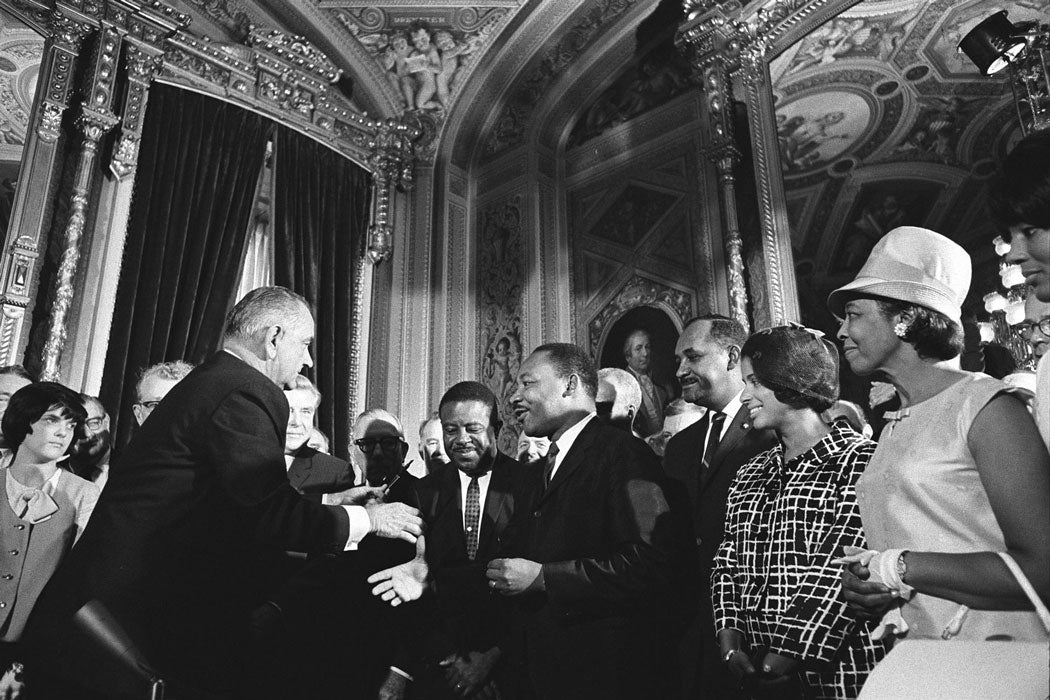The landmark Voting Rights Act of 1965 was signed into law fifty years ago on August 6. The bill was designed to enforce the voting rights guaranteed by the 14th and 15th Amendments to the U.S. Constitution, amendments that had been successfully evaded or violent suppressed for almost a century in the American South.
Passage of the Act was paved by the sacrifices of Civil Rights marchers, most immediately in Selma, Alabama during the events of March, 1965. This Duke Law Journal article explained the Act a year after its passage and today serves as an introduction to it and its times.
The Voting Rights Act has been amended five times to expand its initial protections. The counter-attack against it, beginning with the 19 Southern senators who voted against it originally, continues in voter ID laws and other efforts to suppress voting today.
Historian and Martin Luther King, Jr., biographer David J. Garrow helps put the VRA into historical perspective in the Georgia Historical Quarterly. The period between 1890-1910 “witnessed the all-but-total exclusion of African-Americans from meaningful electoral participation across the South” following the defeat of the biracial experiment of Reconstruction.
Southern whites also limited or prohibited entirely African-Americans from registering to vote in the first place. By 1965, what this meant in a place like Selma, whose population was roughly evenly divided between whites and blacks, was that 99% of those registered to vote were white. The 1% of those registered who were African American had had to put up with humiliations, threats, and beatings simply to register. Jim Crow was perpetuated and enforced in two ways: the actual de jure rules and regulations and the de facto terrorism perpetuated by both officers of the law and freelance thugs, who sometimes turned out to be lawmen. Arson and murder in defense of the system showed it for what it was.
Weekly Newsletter
Following four decades of cases brought under the Act, this 2008 Columbia Law Review article argues that it has “radically altered the political status of minority voters and dramatically transformed the partisan structure of American politics.” There shouldn’t be any debate about that: it has transformed the landscape of the nation.
Support JSTOR Daily! Join our new membership program on Patreon today.







